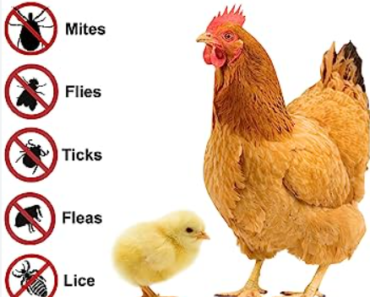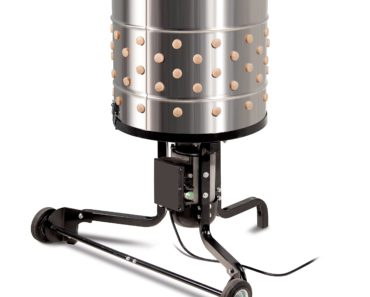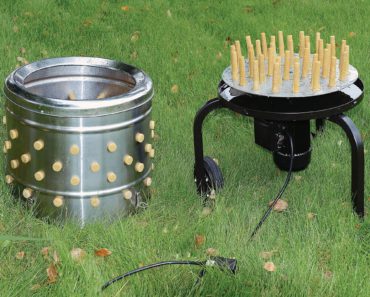Contents
- 1 Enhancing Chicken Nutrition: The Benefits of Corn and Soy Free Chicken Feed
- 2 Understanding the Benefits of Corn and Soy Free Chicken Feed
- 3 How to Transition Your Chickens to Corn and Soy Free Feed
- 4 Finding Quality Corn and Soy Free Chicken Feed
- 5 FAQ
- 5.1 What are the benefits of using corn and soy free chicken feed for poultry health and overall egg quality?
- 5.2 Are there alternative grain options that can be used in corn and soy free chicken feed formulations?
- 5.3 How do I ensure that the corn and soy free chicken feed I’m purchasing is truly free from these ingredients and meets the necessary nutritional requirements for my chickens?
- 5.4 Related Posts

Discover the Health Benefits of Corn and Soy Free Chicken Feed! Are you looking to provide your chickens with a natural and nutritious diet? we explore the advantages of feeding your flock with a corn and soy free diet. Learn how this alternative feed can improve the overall health and well-being of your chickens, resulting in tastier eggs and meat. Say goodbye to artificial additives and embrace a healthier option for your feathered friends.
Enhancing Chicken Nutrition: The Benefits of Corn and Soy Free Chicken Feed
When it comes to raising healthy chickens, nutrition plays a vital role. Providing a balanced diet to your flock is essential for their overall well-being and productivity. One way to enhance chicken nutrition is by using corn and soy-free chicken feed.
Corn and soy are commonly used ingredients in chicken feed. While they do provide certain nutritional benefits, such as energy and protein, they may also come with potential drawbacks. Some chickens may develop allergies or sensitivities to these ingredients, leading to digestive issues or even reduced egg production.
By opting for corn and soy-free chicken feed, you can eliminate these potential problems. Alternative grains, such as wheat, barley, and oats, can be used as substitutes. These grains are still excellent sources of energy and nutrients for chickens without the potential allergenic properties of corn and soy.
Additionally, organic sources of protein can be incorporated into corn and soy-free chicken feed. Ingredients like peas, flaxseed, and fish meal provide high-quality protein while avoiding the allergenic effects that soy may have on some chickens.
It’s important to note that transitioning to corn and soy-free chicken feed should be done gradually. Slowly introduce the new feed to allow chickens to adjust to the change without any disruptions to their digestive systems.
Opting for corn and soy-free chicken feed can be a beneficial choice for enhancing chicken nutrition. By eliminating potential allergenic ingredients and incorporating alternative grains and organic protein sources, you can support the overall health and productivity of your flock.
Understanding the Benefits of Corn and Soy Free Chicken Feed
Corn and soy are commonly used ingredients in chicken feed, but opting for corn and soy free alternatives can have numerous benefits for your chickens.
Why choose corn and soy free chicken feed?
By avoiding corn and soy in their diet, you can reduce the risk of your chickens developing allergies or sensitivities. Corn and soy can be hard for some chickens to digest, leading to digestive issues and nutrient deficiencies.
What are the alternatives?
Instead of using corn and soy, look for chicken feed that includes alternative grains like wheat, barley, or oats. These grains provide a good source of carbohydrates and essential nutrients for your chickens.
Other benefits of corn and soy free feed
In addition to reducing the risk of allergies and digestive issues, corn and soy free feed can also contribute to improved egg quality and taste. Many chicken keepers have noticed a difference in the flavor and color of eggs produced by chickens fed with a corn and soy free diet.
How to Transition Your Chickens to Corn and Soy Free Feed
Transitioning your chickens from their regular feed to a corn and soy free option requires a gradual process to avoid any digestive upsets:
Start slowly: Begin by mixing a small amount of the new feed with the old feed, gradually increasing the proportion of the new feed over a span of 7-10 days.
Observe your chickens: Monitor your chickens closely during the transition period. Look for any signs of digestive discomfort or changes in their behavior. If any issues arise, slow down the transition or seek advice from a poultry nutrition expert.
Offer plenty of fresh water: Ensure your chickens have access to fresh water at all times, as this will aid in digestion and help them adjust to the new feed.
Finding Quality Corn and Soy Free Chicken Feed
With the increasing demand for corn and soy free chicken feed, there are now several options available in the market:
Local feed stores: Visit your local feed stores and inquire about corn and soy free options. They may carry specialized feeds or be able to place an order for you.
Online retailers: Many online retailers offer a wide range of corn and soy free chicken feed. Do some research, read reviews, and compare prices to find the best option for your flock.
Homemade alternatives: If you have the time and resources, consider making your own corn and soy free chicken feed. This allows you to have full control over the ingredients and ensures the feed meets your chickens’ specific dietary needs.
Remember, the key is to select a high-quality feed that meets all the nutritional requirements of your chickens while being free from corn and soy.
FAQ
What are the benefits of using corn and soy free chicken feed for poultry health and overall egg quality?
Using corn and soy-free chicken feed for poultry health and overall egg quality can offer several benefits:
1. Improved Digestive Function: Corn and soy are commonly used ingredients in chicken feed, but some chickens may have difficulty digesting them properly. Corn and soy-free feed options use alternative grains and proteins that are easier for chickens to digest, promoting better nutrient absorption and overall digestive health.
2. Reduced Allergies and Sensitivities: Some chickens may develop allergies or sensitivities to corn and soy, leading to gastrointestinal issues, skin irritations, or respiratory problems. By eliminating these ingredients from their diet, you can minimize the risk of such allergic reactions and promote better immune system function.
3. Enhanced Egg Quality: The diet of a laying hen directly impacts the quality of the eggs they produce. Using corn and soy-free feed can result in eggs with improved taste, color, and texture. These eggs often have a richer yolk color and a more robust flavor profile, which is preferred by many consumers.
4. Organic and Non-GMO Options: Many corn and soy-free feeds are also organic and non-GMO. Choosing such feeds ensures that the chickens are raised on a natural and sustainable diet, free from genetically modified organisms and synthetic pesticides. This can be particularly appealing to consumers who prioritize organic and non-GMO products.
5. Environmental Sustainability: Traditional corn and soy production often involves intensive farming practices that contribute to environmental degradation. Opting for corn and soy-free feed supports more sustainable agricultural methods, such as diversifying grain and protein sources, reducing the reliance on chemical inputs, and promoting biodiversity.
Overall, using corn and soy-free chicken feed can benefit poultry health, promote superior egg quality, align with consumer preferences for organic and non-GMO products, and contribute to environmental sustainability.
Are there alternative grain options that can be used in corn and soy free chicken feed formulations?
Yes, there are alternative grain options that can be used in corn and soy-free chicken feed formulations. Some of these options include:
1. Oats: Oats are a good source of energy for chickens and can be used as an alternative to corn and soy in feed formulations. They are high in fiber and also provide essential nutrients.
2. Barley: Barley is another grain that can be used in chicken feed. It is rich in protein, fiber, and energy. However, it contains less lysine compared to corn and soy, so supplementation may be necessary.
3. Wheat: Wheat can also be used as an alternative grain in chicken feed formulations. It is a good source of energy and protein. However, it should be noted that some chickens may have an intolerance to wheat, so it’s important to monitor their digestion.
4. Millet: Millet is a small-seeded grain that can be included in chicken feed as a substitute for corn and soy. It is high in protein and rich in essential amino acids.
5. Sorghum: Sorghum, also known as milo, is another grain option that can be used in corn and soy-free chicken feed. It is an excellent source of energy and contains various nutrients.
It’s important to consider the nutritional requirements of chickens when formulating feed without corn and soy. The inclusion of alternative grains should be balanced with other protein sources and essential minerals and vitamins to ensure a well-rounded diet for the chickens. Consulting with a poultry nutritionist or veterinarian can help in formulating the best feed for your chickens.
How do I ensure that the corn and soy free chicken feed I’m purchasing is truly free from these ingredients and meets the necessary nutritional requirements for my chickens?
To ensure that the corn and soy-free chicken feed you are purchasing accurately meets your requirements and provides the necessary nutrition for your chickens, follow these steps:
1. Check the label: Look for clear indications on the packaging or product description that states the feed is indeed corn and soy-free. This can help you confirm that the feed does not contain these ingredients.
2. Verify certifications: Look for third-party certifications or logos on the packaging that guarantee the corn and soy-free status of the feed. Organizations like the Non-GMO Project or USDA Organic may provide these certifications.
3. Read the ingredients: Go through the list of ingredients on the feed label. Look for any indicators of corn or soy, such as “cornmeal,” “soybean meal,” or specific variations of these ingredients. Avoid feeds that include these items.
4. Contact the manufacturer: If you still have doubts about the feed’s ingredients or want further clarification, contact the manufacturer directly. They should be able to provide more information about their production process and ingredient sourcing.
5. Seek recommendations: Reach out to other chicken owners or poultry forums to get recommendations for reliable and reputable brands that offer corn and soy-free chicken feed. Hearing from experienced individuals can give you confidence in your purchasing decision.
6. Consult with an expert: If you’re uncertain about the nutritional adequacy of the corn and soy-free feed, seek advice from a poultry nutritionist or veterinarian. They can guide you in selecting a feed that meets the necessary nutritional requirements for your chickens.
Remember, ensuring the accuracy of the corn and soy-free claim is essential for the health and well-being of your chickens. Taking these steps will help you make informed decisions and ensure you’re providing appropriate feed for your feathered friends.
Opting for corn and soy-free chicken feed is a wise choice for poultry owners seeking to prioritize the health and well-being of their chickens. By eliminating these common allergenic grains from their diet, chickens can enjoy a more balanced and nutrient-rich meal plan, promoting optimal growth, immune function, and overall vitality.
Additionally, corn and soy-free feed can help reduce the risk of digestive issues, such as bloating or diarrhea, that can arise from consuming these potentially troublesome ingredients. Furthermore, poultry raised on such feed may produce eggs and meat with a higher nutritional value due to the improved quality and diversity of their diet.
While transitioning to corn and soy-free feed may involve some initial adjustments and potentially higher costs, the long-term benefits outweigh these considerations. Investing in the health and well-being of our chickens ultimately leads to healthier and happier birds that can provide us with nutritious eggs and meat for years to come.
In essence, choosing corn and soy-free chicken feed is a step towards sustainable and responsible poultry farming. It allows us to prioritize the natural dietary needs of our feathered friends while also offering consumers an opportunity to support products that align with their values and health preferences. Together, we can ensure the future of our flocks and promote a more conscientious approach to raising chickens.






